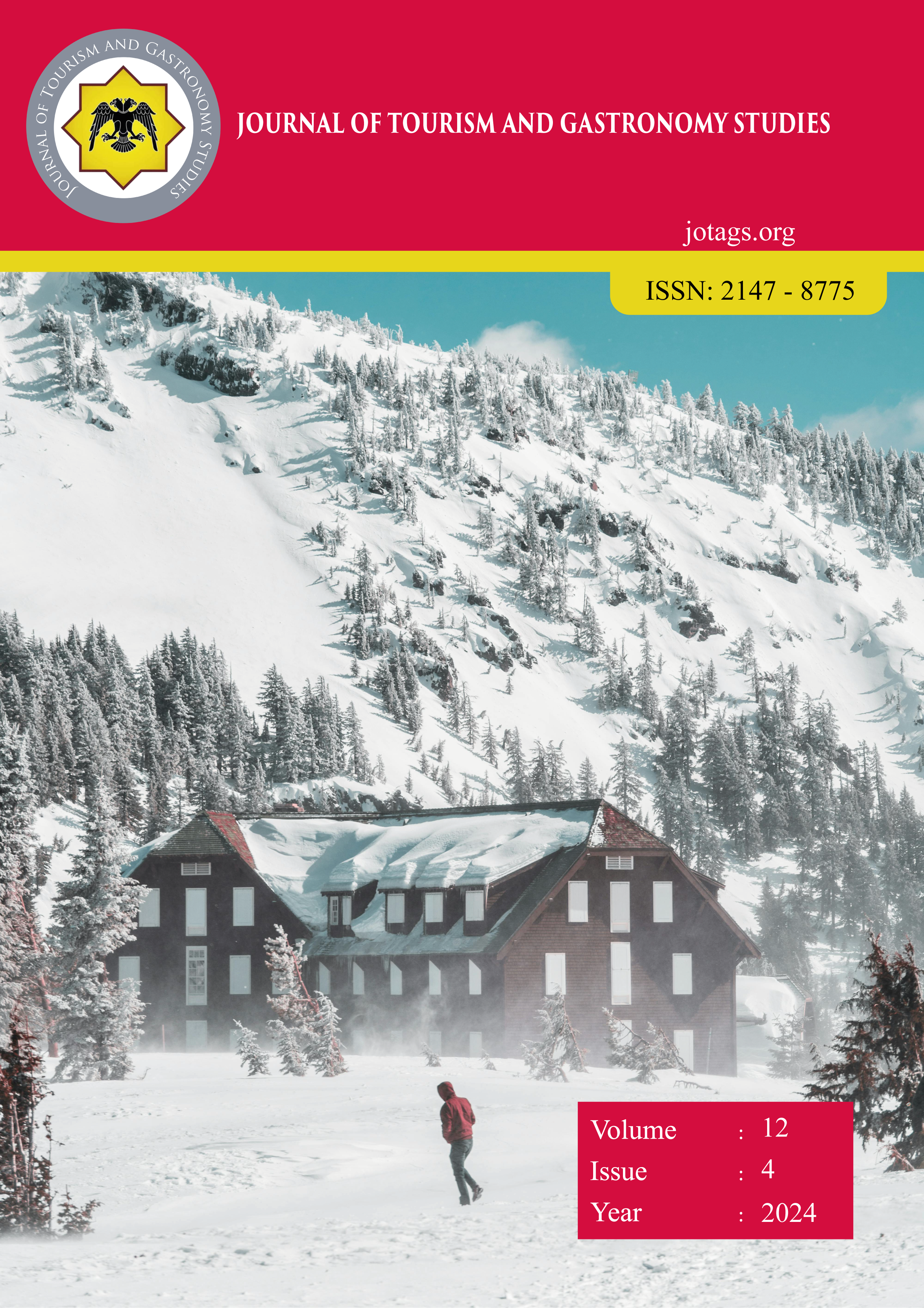Müziğin Tadı: Duyular Arası Etkileşim Müziğin Tat Algısına Etkisi (Taste of Music: Intersensory Interaction The Influence of Music on the Perception of Taste)
DOI:
https://doi.org/10.21325/jotags.2024.1496Keywords:
Crossmodal, Neurogastronomy, Taste Perception, HearingAbstract
This study focuses on sensory interaction. In this context, an in-depth investigation has been conducted into what sensory interaction is and how it occurs. Various sources have been examined based on previous studies in this field, and two different pieces of music and one dish were selected. The selected pieces of music were created by some researchers for sensory interaction studies. These music pieces are compatible with both bitter and sweet tastes. For the purpose of the experiment, a dish from Korean cuisine, "sweet and spicy chicken," was chosen. The reason for selecting this dish is that it contains both spicy and sweet flavors. A sensory analysis experiment has been planned with the selected music and dish. The study employed the method of sensory analysis. In this context, three different tastings were conducted. The same tasters were presented with the selected dish during three phases: two different music conditions and one no-music control group. Statistical analysis results revealed that the music associated with the bitter taste significantly manipulated the perception of the spiciness in the dish, enhancing it.
References
Bakırcı, M. Ç. (2013). Gerçek 'Kafa Karışıklığı': Sinestezi ve Evrim. 18 Kasım 2021 tarihinde Evrim Ağacı: https://evrimagaci.org/gercek-kafa-karisikligi-sinestezi-ve-evrim-361 adresinden alındı
Civittello, L. (2019). Mutfak ve Kültür. (Ç. (Z. N. Nahya ve S. Örnek, Çev.) Ankara: Bilim Yayınevi.
Crisinel, A.-S., Cosser, S., King, S., Jones, R., Petrie, J., & Spence, C. (2012, April). A bittersweet symphony: Systematically modulating the taste of food by changing the sonic properties of the soundtrack playing in the background. Food Quality and Preference, 24(1), 201-204. doi:https://doi.org/10.1016/j.foodqual.2011.08.009
Çoban, G. S. (2021). Maslow’un ihtiyaçlar hiyerarşisi kendini gerçekleştirme basamağında gizil yetenekler. European Journal of Educational and Social Sciences, 6(1), 111-118.
Guedes, D., Garrido, M., Lamy, E., & Prada, M. (2024, March). Disentangling cross-modality and affect in “sonic seasoning”: The effect of music associated with different degrees of sweetness and valence on food perception. International Journal of Gastronomy and Food Science(35), s. 1-8. https://www.sciencedirect.com/science/article/pii/S1878450X2400012X adresinden alındı
Lachs, L. (2022). Multi-Modal Perception. Nobaproject: https://nobaproject.com/modules/multi-modal-perception#vocabulary-receptive-field adresinden alındı
Onan, B. (2010). Beynin bilişsel işlevleri üzerine yapılan araştırmalar ve anadili eğitimine yansımaları. TUBAR, 522-561.
Onoğur, T., & Elmacı, Y. (2015). Gıdalarda Duyusal Değerlendirme. İzmir: Sidas Yayınevi.
Shams, L., & Kim, R. (2010). Crossmodal influences on visual perception. Physics of Life Reviews, 7(3), 269-284. doi:https://doi.org/10.1016/j.plrev.2010.04.006
Spence, C., & Fiszman, B. P. (2016). Multisensory Flavor Perception: From Fundamental Neuroscience Through to the Marketplace. Oxford: Woodhead Publishing.
Stanford, T., & Stein, B. (2007). Superadditivity in multisensory integration: putting the computation in context. NeuroReport, 18(8), 787-792. doi:https://doi.org/10.1097/wnr.0b013e3280c1e315
Stein, B., London, N., Wilkinson, L., & Price, D. (1996). Enhancement of Perceived Visual Intensity by Auditory Stimuli: A Psychophysical Analysis. Journal of Cognitive Neuroscience, 8(6), 497-506. doi:https://doi.org/10.1162/jocn.1996.8.6.497
Tanalp, R. (1975). Duyu Fizyolojisi. Ankara: Ankara Üniversitesi Basım Evi.
Türkel, Y., & Terzi, M. (2007). Talamus’un anatomik ve fonksiyonel önemi. O.M.Ü. Tıp Dergisi, 24(4), 144–154.
Ueda, T., Ugawa, S., Yamamura, H., Imaizumi, Y., & Shimada, S. (2003). Functional interaction between T2R taste receptors and g-protein α subunits expressed in taste receptor cells. Journal of Neuroscience, 23(19), 7376-7380. doi:https://doi.org/10.1523/jneurosci.23-19-07376.2003
Wang, J. Q. (2017). Assessıng The Mechanisms Behind Sound-Taste Correspondences and Their Impact on Multisensory Flavour Perception and Evaluation. Doktora Tezi. Oxford, Birleşik Kırallık: University of Oxford.
Wang, Q., Woods, A., & Spence, C. (2015). What’s Your Taste in Music?. A comparison of the effectiveness of various soundscapes in evoking specific tastes. 2015, 6(6), 2-23. doi:https://doi.org/10.1177/2041669515622001
Wrangham, R. (2009). Catching Fire: How Cooking Made Us Human. UK: Profile Books.
Yazıcı, D. (2017). Müziğin insan beyni üzerindeki etkisi. International Journal of Cultural and Social Studies, 3(1), 88-103. https://dergipark.org.tr/tr/pub/intjcss/issue/30960/337212#article_cite adresinden alındı.
Downloads
Published
How to Cite
Issue
Section
License
Copyright (c) 2024 Journal of Tourism & Gastronomy Studies

This work is licensed under a Creative Commons Attribution-NonCommercial 4.0 International License.








